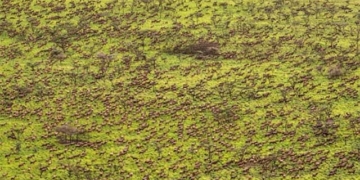Molting Crabs: A Rare Moment Most People Rarely Witness
Crabs and other crustaceans have bodies covered by an exoskeleton made of chitin. This shell becomes very strong due to the absorption of calcium and calcification. While the shell is fixed, crustaceans grow over time, necessitating periodic replacement of the shell during the molting process (from the free-swimming larval stage to adulthood) or simply as they grow larger than their existing shell.
Before molting, a crab typically absorbs calcium from its old shell, then secretes enzymes to detach the old shell from the skin or epidermis. This skin will be covered by a new, softer, and thinner shell compared to the old one, according to NOAA.
- The drink Japanese women often consume before meals to maintain their figure and longevity, widely available in Vietnamese markets at a low price but should be used with caution
- Discovery of the only mouse species living at an altitude of 6,700m: A place where no vegetation can survive due to harsh conditions
- The British Museum releases a new statement about the gender of a Roman Emperor


















































